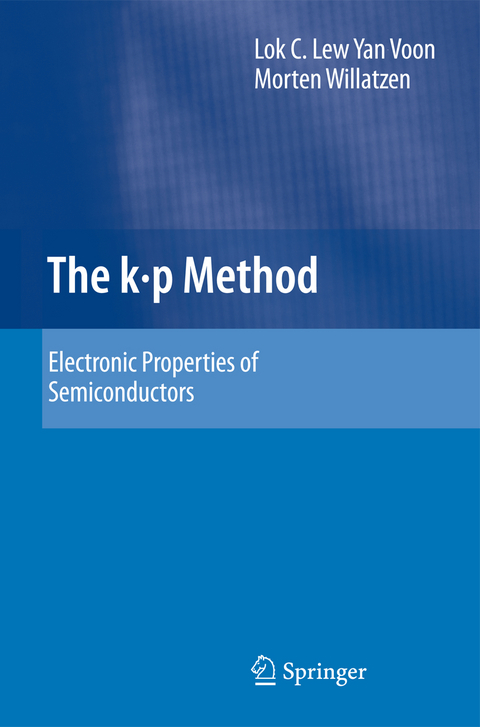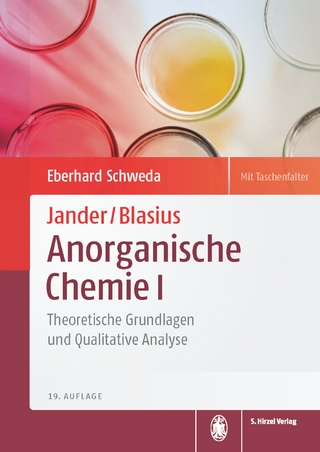
The k p Method
Electronic Properties of Semiconductors
Seiten
2010
|
1. Softcover reprint of hardcover 1st ed. 2009
Springer Berlin (Verlag)
978-3-642-10090-1 (ISBN)
Springer Berlin (Verlag)
978-3-642-10090-1 (ISBN)
This book presents a detailed exposition of the formalism and application of k.p theory for both bulk and nanostructured semiconductors. The reader will gain an understanding of the k.p method and an understanding of the electronic structure of semiconductors.
I ?rst heard of k·p in a course on semiconductor physics taught by my thesis adviser William Paul at Harvard in the fall of 1956. He presented the k·p Hamiltonian as a semiempirical theoretical tool which had become rather useful for the interpre- tion of the cyclotron resonance experiments, as reported by Dresselhaus, Kip and Kittel. This perturbation technique had already been succinctly discussed by Sho- ley in a now almost forgotten 1950 Physical Review publication. In 1958 Harvey Brooks, who had returned to Harvard as Dean of the Division of Engineering and Applied Physics in which I was enrolled, gave a lecture on the capabilities of the k·p technique to predict and ?t non-parabolicities of band extrema in semiconductors. He had just visited the General Electric Labs in Schenectady and had discussed with Evan Kane the latter’s recent work on the non-parabolicity of band extrema in semiconductors, in particular InSb. I was very impressed by Dean Brooks’s talk as an application of quantum mechanics to current real world problems. During my thesis work I had performed a number of optical measurements which were asking for theoretical interpretation, among them the dependence of effective masses of semiconductors on temperature and carrier concentration. Although my theoretical ability was rather limited, with the help of Paul and Brooks I was able to realize the capabilities of the k·p method for interpreting my data in a simple way.
I ?rst heard of k·p in a course on semiconductor physics taught by my thesis adviser William Paul at Harvard in the fall of 1956. He presented the k·p Hamiltonian as a semiempirical theoretical tool which had become rather useful for the interpre- tion of the cyclotron resonance experiments, as reported by Dresselhaus, Kip and Kittel. This perturbation technique had already been succinctly discussed by Sho- ley in a now almost forgotten 1950 Physical Review publication. In 1958 Harvey Brooks, who had returned to Harvard as Dean of the Division of Engineering and Applied Physics in which I was enrolled, gave a lecture on the capabilities of the k·p technique to predict and ?t non-parabolicities of band extrema in semiconductors. He had just visited the General Electric Labs in Schenectady and had discussed with Evan Kane the latter’s recent work on the non-parabolicity of band extrema in semiconductors, in particular InSb. I was very impressed by Dean Brooks’s talk as an application of quantum mechanics to current real world problems. During my thesis work I had performed a number of optical measurements which were asking for theoretical interpretation, among them the dependence of effective masses of semiconductors on temperature and carrier concentration. Although my theoretical ability was rather limited, with the help of Paul and Brooks I was able to realize the capabilities of the k·p method for interpreting my data in a simple way.
Dr. Lew Yan Voon has received recognitions for this teaching (e.g., advising awards, NSF CAREER award) and has taught the k.p method to MS students, PhD students and postdocs; this pedagogical experience has been invaluable for testing the manuscript as a textbook.
Introduction.- Part I: Homogeneous Crystals. One-Band Model.- Perturbation Theory - Valence Band.- Perturbation Theory - Kane Models.- Method of Invariants.- Spin Splitting.- Strain.- Part II: Nonperiodic Problem. Shallow Impurity States.- Magnetic Effects.- Electric Field.- Excitons.- Heterostructures: Basic Formalism.- Heterostructures: Further Topics.- Conclusion.- Quantum Mechanics and Group Theory.- Symmetry Properties.- Hamiltonians.
| Erscheint lt. Verlag | 19.10.2010 |
|---|---|
| Zusatzinfo | XI, 445 p. 50 illus. |
| Verlagsort | Berlin |
| Sprache | englisch |
| Maße | 155 x 235 mm |
| Gewicht | 682 g |
| Themenwelt | Naturwissenschaften ► Chemie ► Analytische Chemie |
| Naturwissenschaften ► Chemie ► Physikalische Chemie | |
| Naturwissenschaften ► Physik / Astronomie ► Atom- / Kern- / Molekularphysik | |
| Naturwissenschaften ► Physik / Astronomie ► Festkörperphysik | |
| Naturwissenschaften ► Physik / Astronomie ► Thermodynamik | |
| Technik | |
| Schlagworte | Band structure method • bulk crystal • Burt Foreman Theory • electronic properties • electronic structure semiconductor • Exciton • Heterostructure • kp theory • nano physics • nanostructered semiconductor • nanostructures • perturbation theory • semiconductor • semiconductors |
| ISBN-10 | 3-642-10090-2 / 3642100902 |
| ISBN-13 | 978-3-642-10090-1 / 9783642100901 |
| Zustand | Neuware |
| Haben Sie eine Frage zum Produkt? |
Mehr entdecken
aus dem Bereich
aus dem Bereich
Theoretische Grundlagen und Qualitative Analyse
Buch | Hardcover (2021)
S. Hirzel Verlag GmbH
54,00 €


